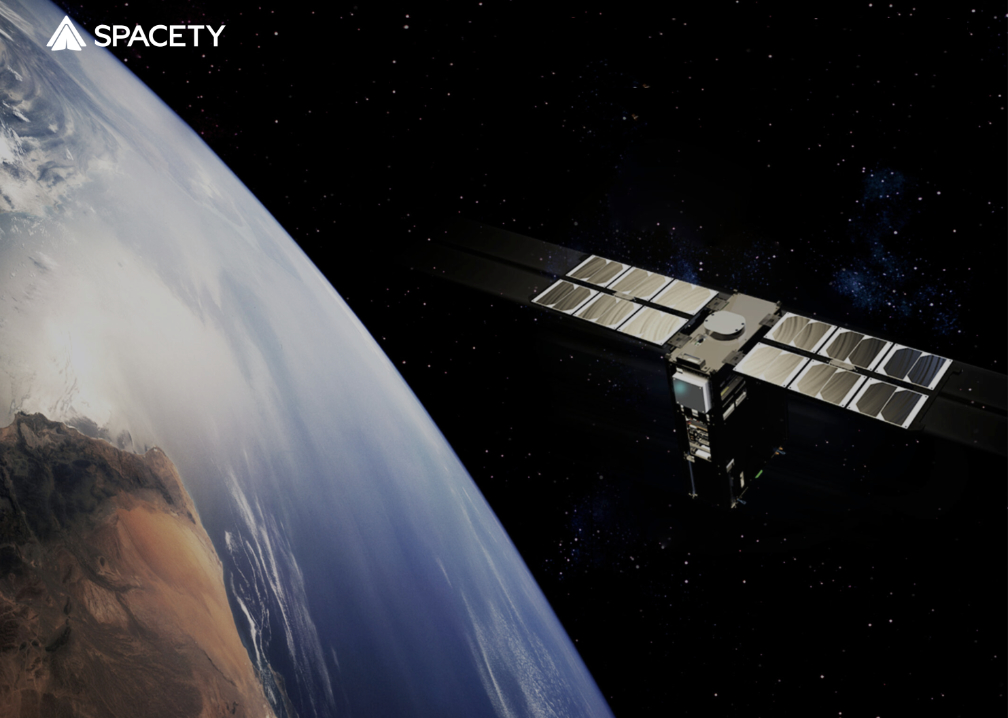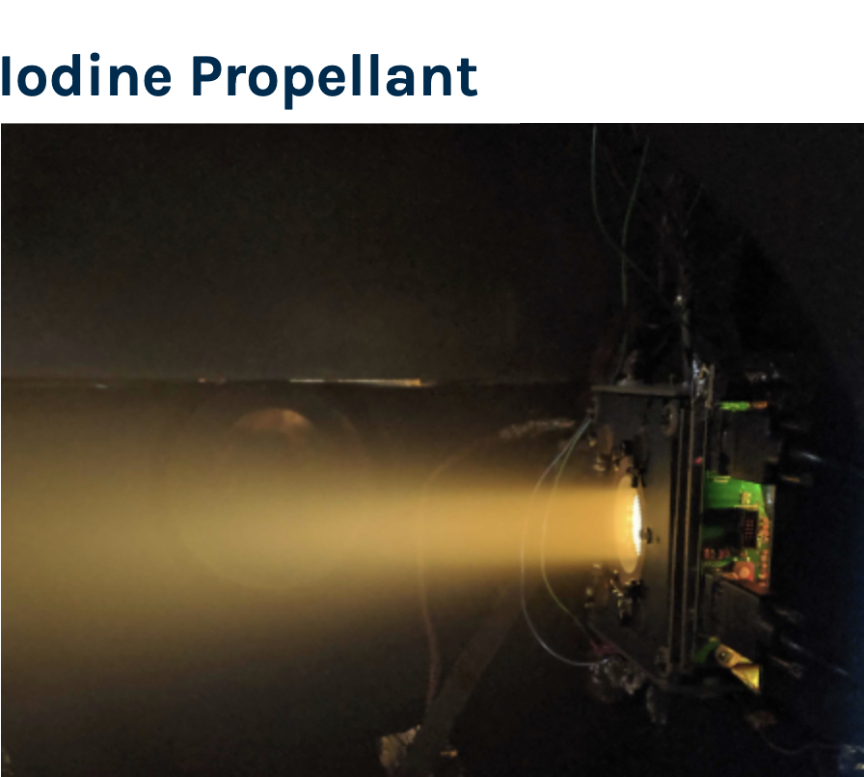
The space industry seeks new solutions to ensure economic and environmental space sustainability with the rise of satellite mega-constellations. A solution lies in the use of on-orbit propulsion, but traditional systems are not fit for the New Space paradigm.

ThrustMe has announced that they have successfully tested the first iodine-fueled electric propulsion system in space aboard the Spacety Beihangkongshi-1 satellite. This world first, on-orbit demo has the potential to transform the space industry.

On December 28, 2020, the first iodine electric propulsion system to be launched into space was successfully fired, with a second successful test on January 2, 2021. Both test burns were performed by ThrustMe’s NPT30-I2-1U propulsion system onboard the Beihangkongshi -1 satellite from Spacety.

The satellite was launched on November 6, 2020, and after several weeks of satellite commissioning, the propulsion system was operated during two, 90-minute burns that resulted in a total altitude change of 700 m. These tests represent the first in-space operation of the NPT30-I2-1U and the first demonstration of iodine as a viable propellant for electric propulsion systems: an important step in accelerating its commercial adoption.
A breakthrough for the satellite industry.
The NPT30-I2-1U allows propulsion systems to be delivered completely prefilled to customers and that allows the satellite integration process to be significantly simplified and streamlined. Therefore, iodine offers the potential to provide both economic, and environmental sustainability for the space industry. Indeed, most conventional electric propulsion systems make use of xenon or krypton which are expensive, rare and must be stored under very high pressure. Furthermore, satellite assembly, integration and testing can be more complicated as specialized equipment and trained personnel are required to safely load fuel tanks with such propellants.
Iodine, by contrast, can be stored as a solid at room temperature, is much less expensive, more abundant, and completely unpressurized.
In 2020, the European Space Agency (ESA), supported the development of ThrustMe’s NPT30-I2-1U propulsion system through the ARTES C&G (Competitiveness and Growth) program (funded by France) for innovative technologies for the SATCOM industry. In addition to the on-orbit demonstration, the NPT30-I2-1U is being prepared for the GEO satellite market and a separate unit is currently undergoing extensive radiation testing, which ThrustMe stated is proceeding as planned.
The development of ThrustMe’s NPT30-I2-1U was also supported by the French National Space Agency (CNES) via a project as part of their R&T program.
“In 2008, we identified iodine as an ideal propellant for electric propulsion. Since then, we have developed a number of key technologies to be able to offer, as of today, a complete, standalone, propulsion system to meet current and emerging market needs. This is an important product for our customers as it allows them to deploy their satellite constellations, and to take corrective actions to mitigate collision or debris risks”, said Ane Aanesland, CEO of ThrustMe.

“It has been a long road to bring this product from dream to reality. To make it happen we had to innovate, develop a complex system from the ground up, and perform fundamental research studies since many properties of iodine are missing in scientific databases. I am happy that we have ended up with a very high performance, safe and reliable propulsion system that is now available for any smallsat, said Dmytro Rafalskyi, CTO of ThrustMe.
“The successful launch and the first firings are significant milestones in the development of ThrustMe’s iodine electric propulsion system. We are pleased to support ThrustMe in the development and demonstration of this propulsion module through the ARTES C&G program,” noted Barnaby Osborne, Small Satellite Technology Coordinator, ESA Telecommunications and Integrated Applications.
“We are very happy to have supported the in-orbit demonstration of ThrustMe’s iodine electric propulsion system and are very pleased to have helped a French company achieve such a historic milestone,” added Thomas Liénart, Head of the Propulsion, Pyrotechnics and Aerothermodynamics office at CNES.
ThrustMe is a deep-tech space propulsion company, based in the Paris-region, France. It leverages more than 10 years of applied and fundamental research at Ecole Polytechnique and the French National Centre for Scientific Research (CNRS). ThrustMe offers a portfolio of turnkey propulsion systems that have been tested in space and are available for a wide range of satellites and space missions. Its unique products make use of breakthrough innovations, such as solid iodine propellant, to streamline delivery and integration with client satellites, and to enable future economic and environmental sustainability of the space industry.
The NPT30-I2-1U is a complete, standalone, propulsion system that includes all subsystems necessary for its operation such as the power processing unit, an intelligent operation controller, and iodine propellant storage and management. It has a 1-Unit CubeSat form factor, and is prefilled with solid, unpressurized, iodine propellant. The NPT30-I2-1U is the first iodine-fueled electric propulsion system to be launched into space, and can provide a total impulse of 5500 Ns at a maximum thrust of 1.1 mN and with a specific impulse up to 2450s. Extreme miniaturization of the system is achieved through several innovations that include pipe-less propellant delivery, custom RF generation technology, a dedicated plasma ignition system, and integrated thermal management. A high level of robustness and safety is achieved through the implementation of built-in self-test and self-tuning algorithms, and several layers of security checks.
